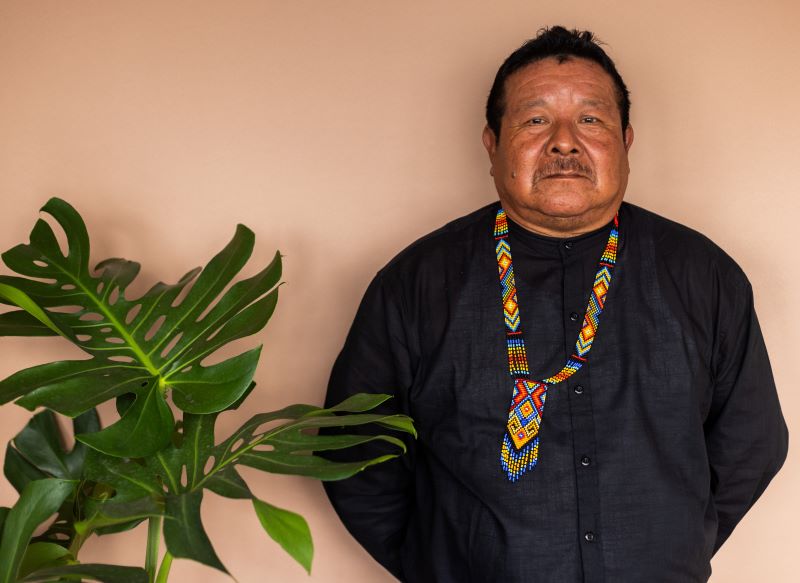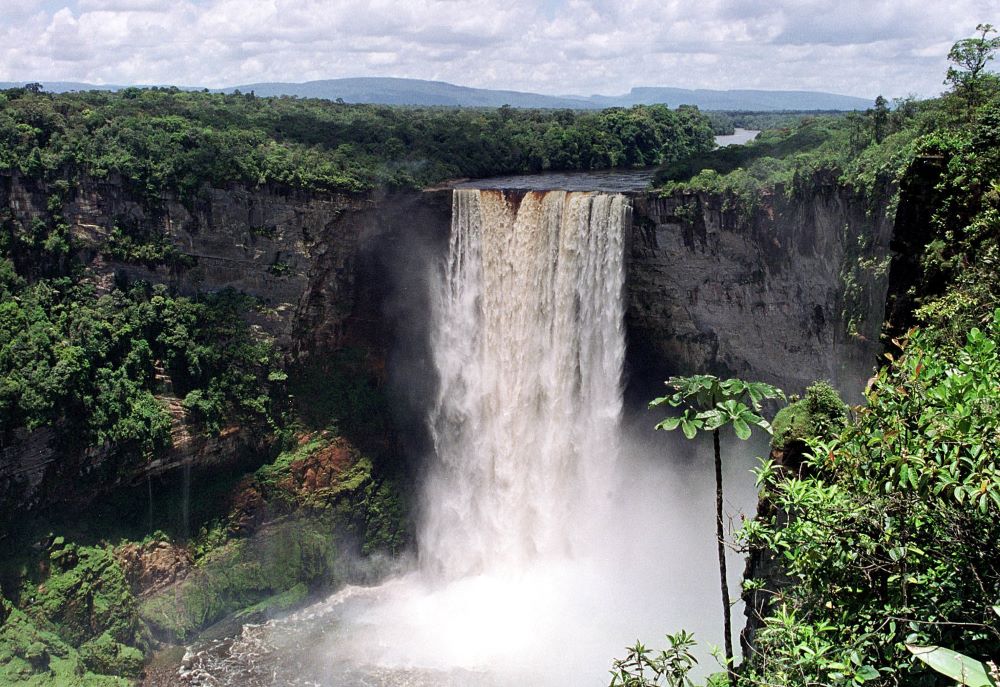Comment: Guyana’s Indigenous communities are under siege from all sides – including an opaque carbon-offsetting scheme agreed by the government on our lands
Mario Hastings is a community leader and former Toshao of Kako Village in Upper Mazaruni, Guyana.
The Essequibo region of Guyana where I live lies at the heart of Guyana’s economic expansion – it’s one of the fastest-growing economies in the world. Essequibo is also the home of many of Guyana’s Indigenous communities, and we are under siege from all sides.
To the north, there is oil drilling off the coast. To the west, the Venezuelan army threatens to invade as the government covets Essequibo’s natural riches. To the south, fires rage as Brazilian farmers clear the borderlands of rainforest. And in the east, the Guyanese government has traded the rights to the intact forests of the Essequibo for global carbon offsets as well as for gold-mine concessions – often on the same lands – even though many Indigenous communities live in these territories.
Colombia adds nature to the mix with its $40-billion energy transition plan
The Indigenous communities of Guyana, similar to Indigenous communities around the globe, live in the space between economic development and cultural conflict. And that is only when our existence is acknowledged. My village, for example, is not located on any “official” maps even though we have lived on these lands for many generations.
But our continued existence must be a priority to ensure the success of climate solutions linked to our forests.
Guyana’s forests are valued because so many of the 18 million hectares of woodlands within the country’s borders remain undisturbed. Our trees are exceptional for their timber, our soil is rich, and in many places, the mineral wealth underground is unimaginable. And yet, the trees are still standing because of the ways in which we Indigenous Peoples have sustained them and how we live in relation to these forests. No one else cares for these territories in the same way.
“Kept in the dark”
As we have kept our territories intact for generations, Indigenous lands, like the Essequibo region, include a large percentage of forests, sheltering much of the world’s biodiversity and absorbing large quantities of carbon. But carbon credit transactions that ignore Indigenous land rights sabotage the traditional governance systems and our relationship to nature that has kept the forests so valuable.
There have been two rounds of carbon credit sales in Guyana, with payments from international bodies making their way through the government and a few other middlemen until reaching the group of Toshaos (community leaders) who have agreed to the government’s uncompromising terms. The cost of this compliance, however, has been far too steep.

Guyanese community leader Mario Hastings (Photo: Kamikia Kisedje / Nia Tero)
We still do not have access to the carbon credit scheme agreement that the government has signed – even for those communities that the government does recognize. All of us are kept in the dark.
The international organization that authorizes this carbon credit scheme, the Architecture for REDD+ Transactions (ART), has rejected a formal complaint made by the Amerindian Peoples Association about this lack of transparency. And yet, our lands have been given out without our consent and without resolving the issues surrounding the titles to our customary territories.
From where we stand, it does not matter if the land grab is for the gold in the ground – where removing it threatens the trees and rivers – or for the carbon in the trees, which must remain standing. We should be allowed to share our opinions and participate in the decision-making. Instead, we are told that the carbon in the trees on our lands does not belong to our people, it belongs to the state.
Carbon profits for who?
We have complained that the carbon credit scheme fails to provide an adequate process for validating the carbon, and it does not define who has rights to profit off of the carbon. The scheme’s standards do not adhere to ART’s environment and social safeguards. And our communities’ right to free, prior and informed consent (FPIC) has been repeatedly ignored.
Some of the communities were told they could submit sustainability plans, for how they would continue to care for the forests, and in return they would receive payments to subsidize that work and their way of life. But, in doing so, the communities were not surrendering their rights, especially their land rights that the government doesn’t recognize in the first place.
Amazon state that will host COP30 strikes “largest carbon credit sale in history”
Typical of places with a wealth of natural resources that have yet to be exploited, Essequibo is rarely in the lens of global media coverage. Outside interests operate with less restraint when they feel that no one is watching. And so, with the carbon credit markets, Indigenous rights are rarely respected, and no one notices.
If we want to stave off the worst of climate change, however, we need tropical forests to remain upright and to do that, governments need to respect Indigenous rights over our lands and the biodiversity, forests and carbon that we protect. We want to be of service through the stewardship of our territories – and all humanity can benefit.
Read More

